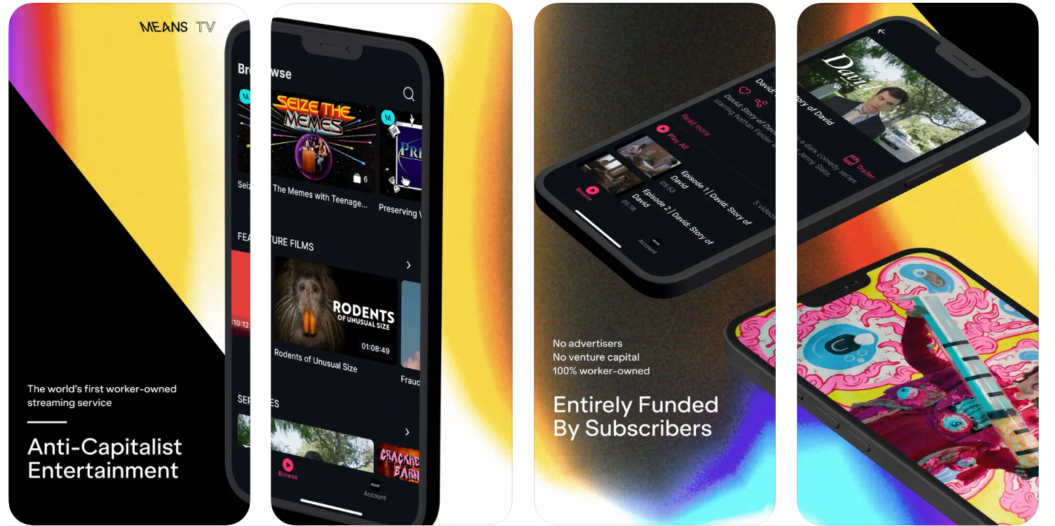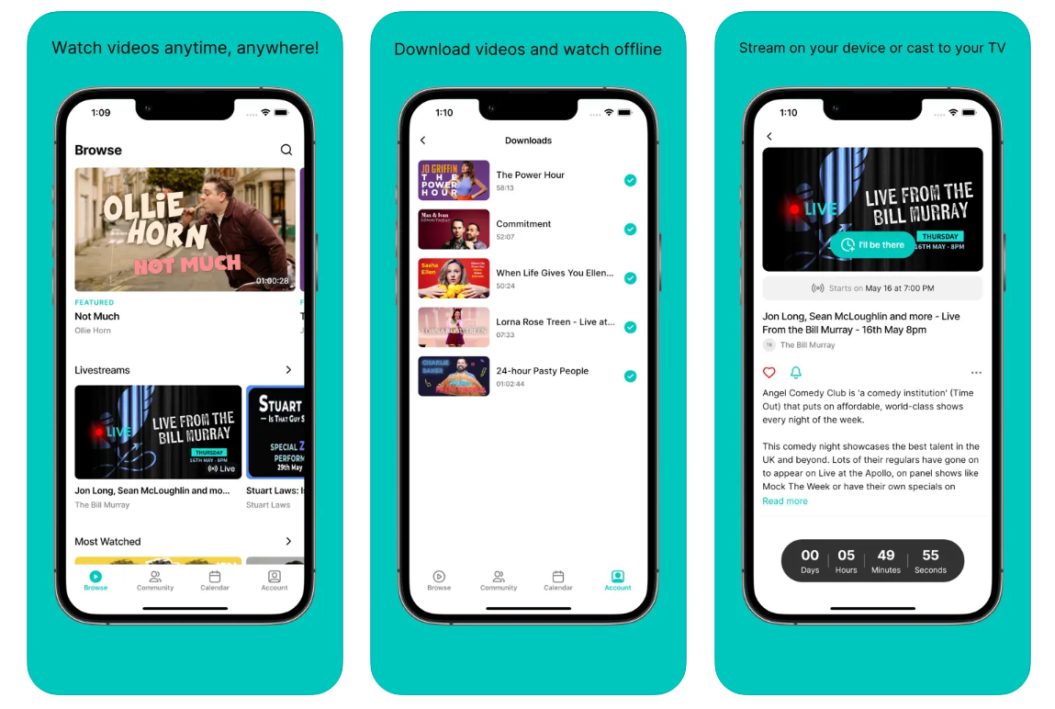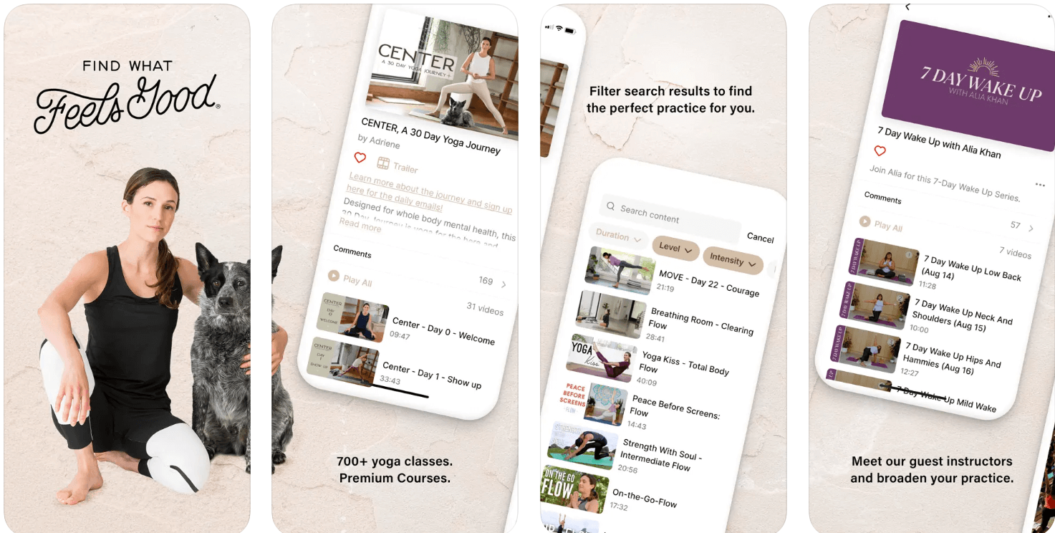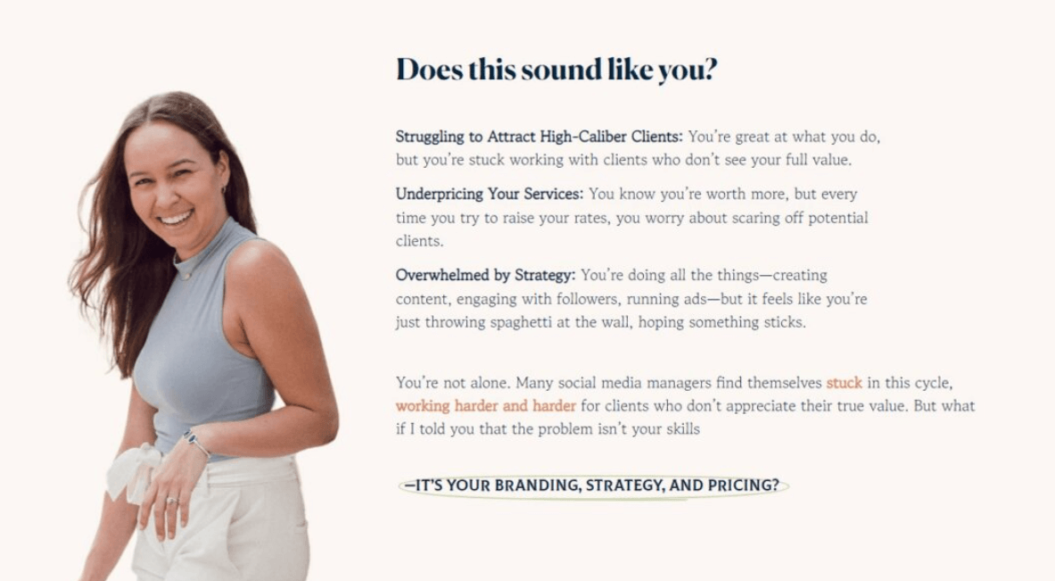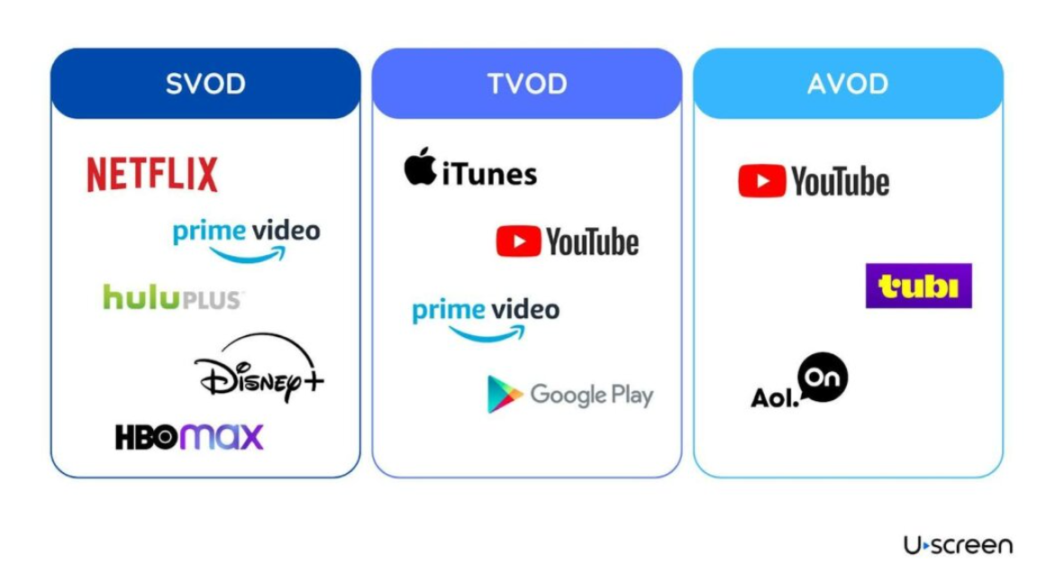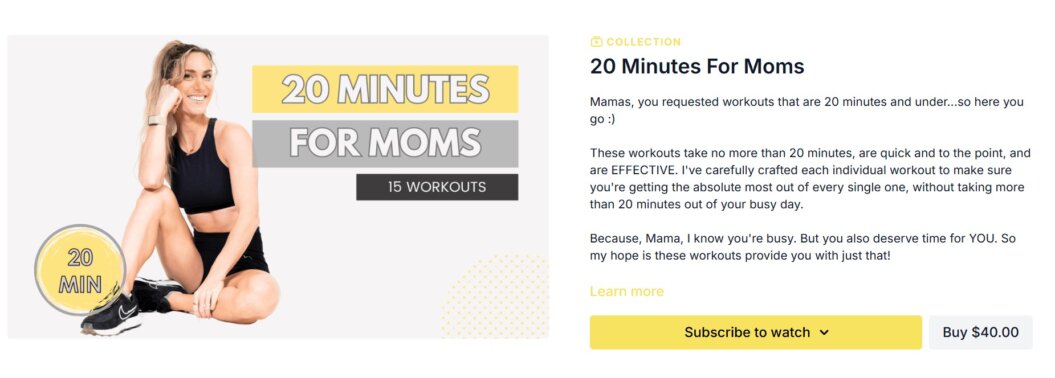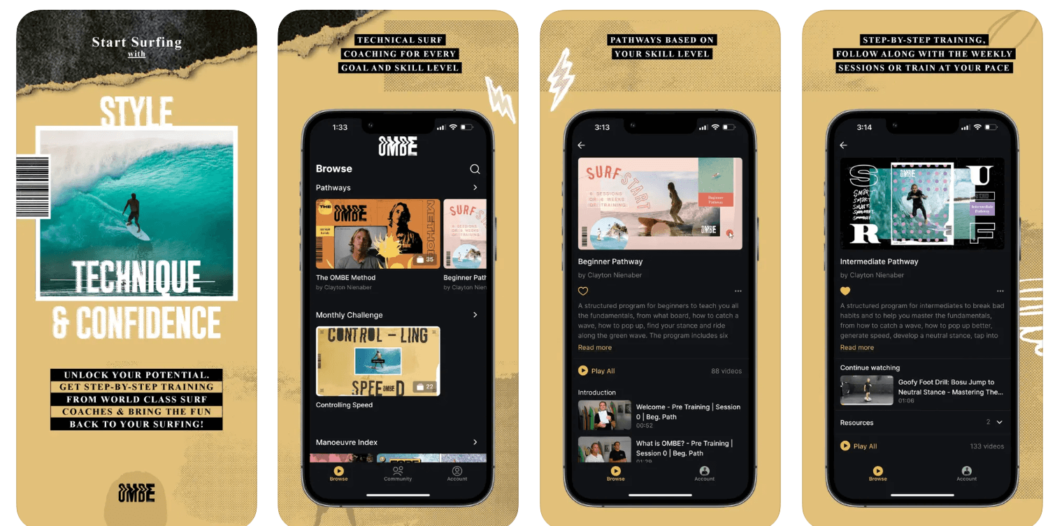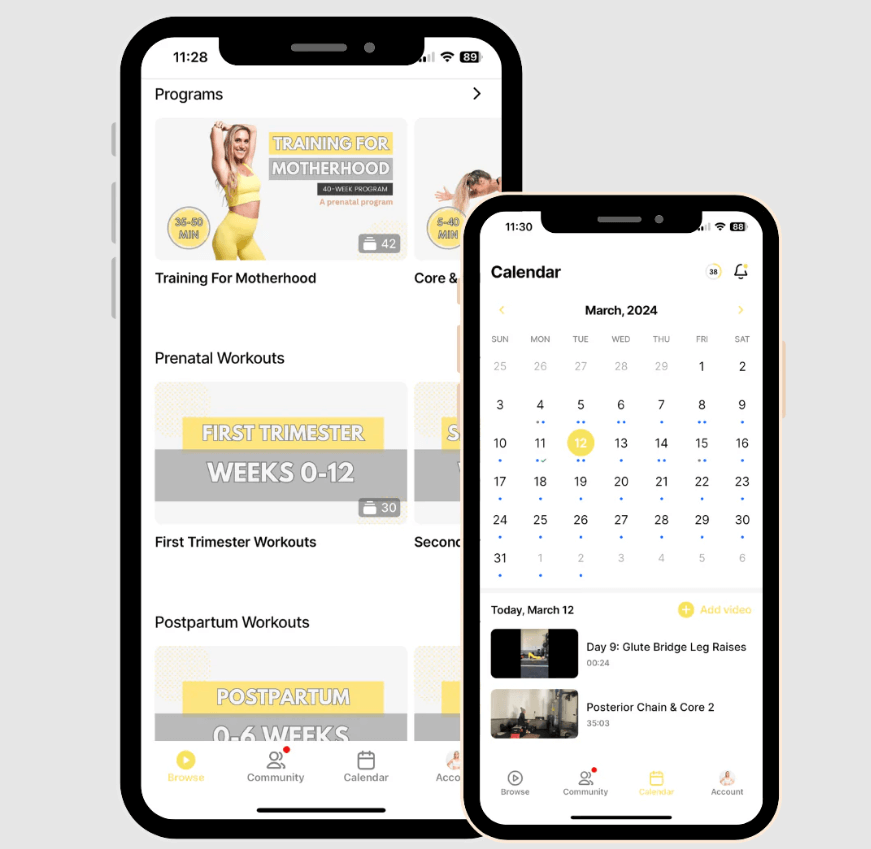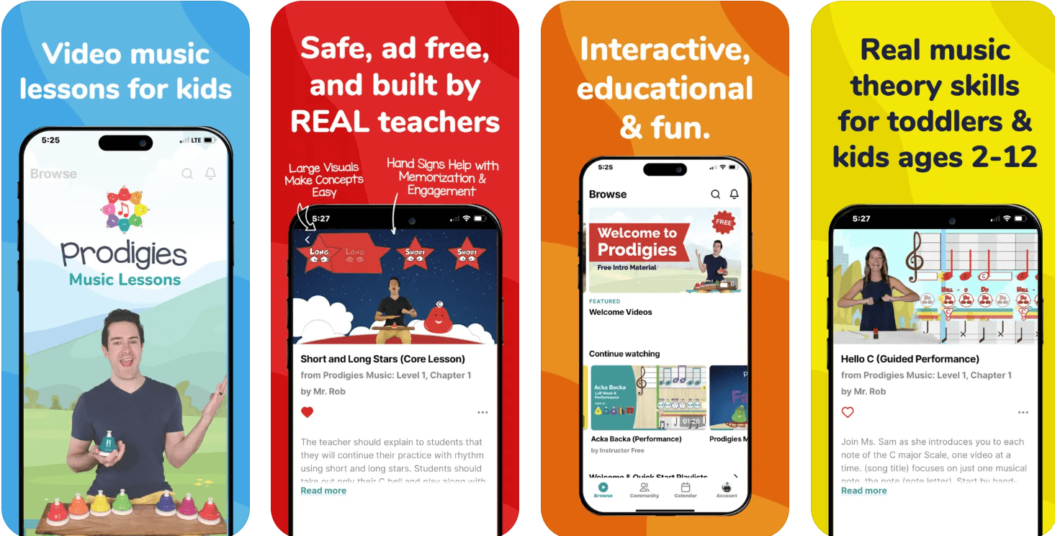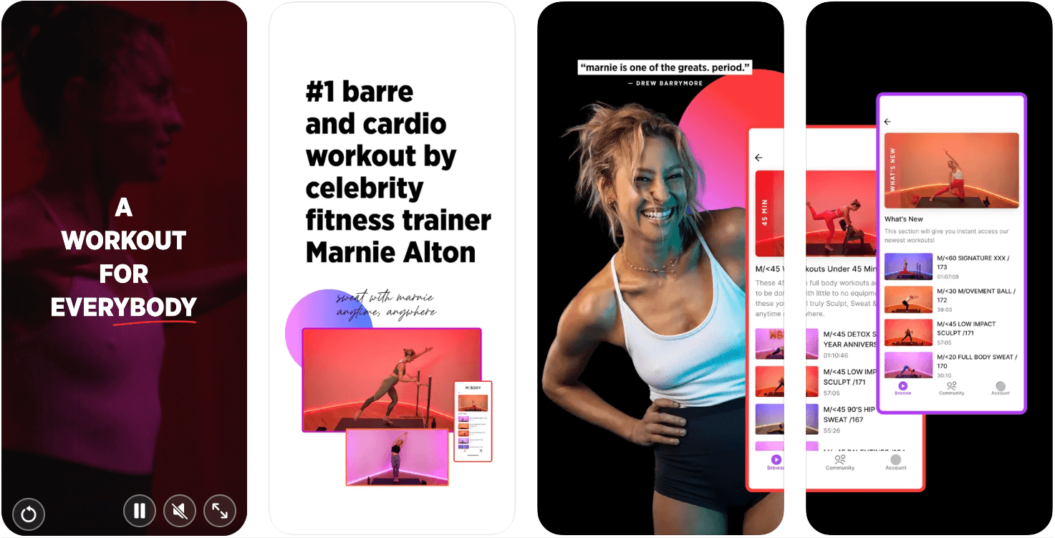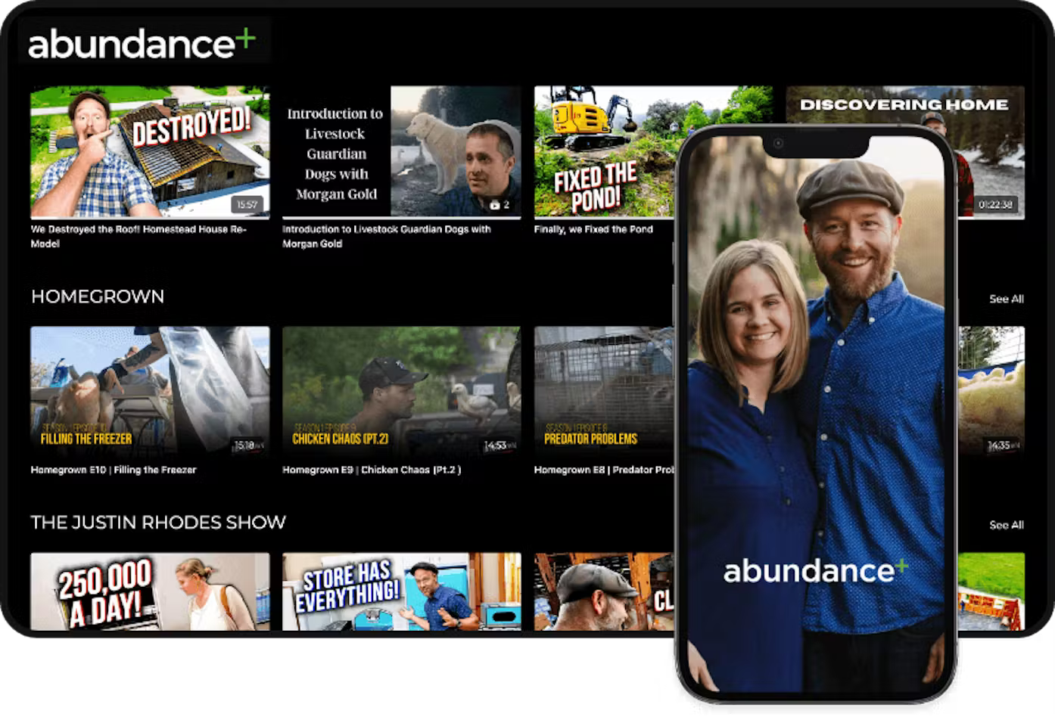Have you ever watched a show on Netflix and thought, “I could do this too”? Well, you’re not alone. Launching a streaming service isn’t just for the giants like Netflix or Hulu. Independent video businesses, creative minds, and even smaller media companies can own a slice of the streaming pie—and it’s not as out of reach as you might think.
The best part? You don’t need any technical skills to get started! We break down how to create a Netflix-style app, what you need to get started, plus an expert dive into the streaming market and why now is the time to dive in. We’ll also walk you through the common challenges creators face when launching an app and how to overcome them.
The Streaming Business Model: why it’s so successful + an expert look into the streaming app market
The video streaming business model is so successful because video streaming is now a commodity. It’s so ingrained into our daily lives that we can hardly dare to imagine where we’d be without it. It’s convenient, it gives instant access to our favorite content for a low monthly price and we can watch them anywhere, any time from any device.
So how does this success translate to apps specifically?
3,500+ video creators have launched streaming apps with Uscreen and we’ve taken a deep dive into the data to find out exactly what works for them, and how central apps are to their customers’ experience:
- Users spend 25% more time watching content on their mobile apps – offline viewing makes their content truly portable to watch anytime, anywhere.
- 50% of live streaming views happen in their apps – no need for a big screen to tune in.
- Our customers with mobile & TV apps experience a 15% increase in retention – meaning their users are more likely to stick around.
- Our media & entertainment customers experience (on average) a member growth of 70% in their first month of launching an app – because they’re giving users what they want.
- Nearly 50% of TV app viewers watch solely on their TV apps – it’s all about comfort!
Macy and Chase, founders of Fittest Core, share how they found success launching their fitness app with a Netflix-style catalog:
Looking back to the start of 2023, the average person’s monthly spend on streaming services jumped up from $48 to $61. While 40% of content was consumed on apps, that steadily increased to 59% by the end of 2024.
There’s lots of money to be made from this popularity too. Worldwide revenue for Subscription-Video-On-Demand services is set to reach $119.09bn in 2025 and grow at a rate of 6.90% annually, reaching a projected $155.51bn by 2029.
This is good news for you because the demand for accessing all kinds of content as a subscription streaming service is continuing to grow, especially when you offer flexible ways for people to watch with apps.
The even better news is that there’s room for everyone. If you have a niche, there’s an audience out there for you who will benefit from your app. Just picture them curled up on the sofa watching your videos on their TV, or following along on their mobile while out and about. If you can imagine it, you can make it happen!
So how do you create a Netflix-style app of your own? Let’s discuss what you need to make it happen and how to do it.
What you need to build a Netflix-style app
Firstly, before you jump into the how of creating your app, make sure you’re app-ready. You need 3 crucial things to create a streaming app:
- A library of high-quality content ready to go
- An audience willing to subscribe
- The budget to invest in creating and maintaining your app
You don’t necessarily need to have tons of video content to start, but it’s important to have a strategy for how much content you plan to create, produce, and publish on your app to ensure your subscribers have a reason to keep returning.
There are two ways you can create your own Netflix-style app: hire a developer and build it yourself, or lease an app through an OTT platform for a monthly fee and they do all the hard work for you.
We’ll go into more depth about the pros and cons of each route below, but the key difference between the two is the cost and complexity involved. Hiring a developer gives you more freedom and control over what you create, but it’s a huge financial investment upfront, and it’s a longer timeframe to build an app from scratch and get it live in the app store.
Using an OTT platform means you have a team of professionals who handle the app build in exchange for a monthly fee. It doesn’t require any coding, or technical know-how, and it’s a fraction of the cost, making it much more accessible.
We’re going to be mostly focusing on how to build an app with an OTT platform in this article, which is our area of expertise at Uscreen but you can apply the following 6 steps to the DIY developer route too 👇
How to build your Netflix-style app in 6 steps
1. Evaluate your current content and audience
The first thing to pin down is what you’re offering within your niche. For example, are you a fitness creator, YouTube entertainer, or educator? Great! But let’s be more specific. Define what your content and brand are all about and what makes you different from the others out there.
Milou Pietersz, Content Creator and Founder of Simply Multimedia shares her advice on what you need to ask to find your people:
- Who are they? Their demographics, psychographics, geographics, etc.
- What are their core pain points and goals? What they struggle with the most, and where they hope to be once they overcome their challenges.
- Which of your competitors are they considering or actively paying for? The memberships in your niche that target the same audience.
Analyse who’s following you on social media, and how they interact with your posts and gather as much information as you can to build a clear picture of who your content resonates with most. What do they like? How do they talk? And most importantly, what pain points do they have that you can address with your app?
2. Define your unique value proposition
Next, research your competitors to be clued up on exactly what they’re offering. What makes your brand and content different? How do you stand out?
This definition will form the basis of your unique value proposition (USP). Think of it as your elevator pitch, describing what your membership is all about, and what makes it unique. Take all the research you’ve done so far, and use this to refine the definition of what your membership is, who it’s for, and why it stands out from the others.
Milou Pietersz, Founder of Simply Multimedia
3. Choose your monetization model
Once you’re clear on what your audience wants, and what your competitors are offering, it’s time to decide on your monetization model. These are the most popular options:
- SVOD: Subscription-video-on-demand. Charge a monthly (or annual/quarterly) fee in exchange for unlimited access to your content.
- TVOD: Transactional-video-on-demand. Having content available to purchase on a pay-per-view basis.
- AVOD: Advertising-video-on-demand. Users can watch your videos for free and are served with ads, and you gain revenue based on the views and engagements with these ads.
For a Netflix-style app, we’d recommend the SVOD model. It gives paid subscribers the flexibility and easy use they want while giving you recurring revenue that you can rely on.
Depending on your niche, TVOD can be a useful way to offer one-off video collections in addition to your on-demand catalog. It’s an opportunity to reach a wider audience who would benefit from one particular collection or program, but don’t want a recurring subscription.
Like Fittest Core’s video bundles:
Users have the option to subscribe and access everything on-demand or buy the collection as a one-off if that’s all they want to focus on.
With your subscription model shaping up, let’s look at the features you need to bring your app to life.
4. Decide which key features you need to create your ideal streaming experience
However you choose to build your app, you’ll need to be clear on the features you want. Here are the 8 key features to create the best possible experience for your subscribers.
- Video catalog: this is the foundation for your Netflix-style app so you want it to be as good as possible. Having a search function and custom filters make it easy for your users to find what they want, and categories to group content together are all key features to make your video catalog easy to browse.
- Both mobile and TV apps: If you’re launching an app, you need to consider the different devices that your users are going to access. This means you need to create multiple versions of your app to be compatible with each platform (like IOS and Android), and apps like Roku, Samsung, and Fire TV.
TV apps are an essential part of the way we stream, and offering these gives you the edge over your competition.
- Live streaming: Going live is a great way to add value and build a connection with your subscribers. Our data shows that hosting regular live events can double monthly revenue.
Marnie Alton has found success with live streaming in her M/Body Barre fitness membership, retaining the vibe attendees would get from an in-person class where they regularly have 100+ people joining the live sessions:
From the feedback we get, people still prefer to watch the live class versus the polished produced video. People feel closer to us because they’re seeing real things happening in real-time.
Marnie Alton, Founder of M/Body
- Content calendar: This adds something extra to the Netflix-style experience to showcase what’s coming up so your users can see when live sessions are happening, and get reminders as a push notification.
- White labeling: A branded experience is about being consistent in all areas of the customer journey, so they have that continuity and you as the creator have real ownership over the look and feel of the app.
- Offline viewing: Being able to watch your videos offline gives users the flexibility to access them on the go, where and when it’s convenient. It’s a major benefit for M/Body in the way members access their workouts:
I’ve been really happy with apps so far because you can work out offline. That’s a really big favorite for me and it’s fun too because again we have such a global and diverse community with people where wi-fi isn’t always the greatest for them, where they live or where they’re at, or they’re taking us on a on a vacation or on a road trip.
Marnie Alton, Founder of M/Body
- Push notifications: This is an essential feature to keep your users coming back to your app. You can use these to announce new releases, post updates, and invite them to join a live stream. Getting a direct message from you invites them to take action, reducing the chance of your app sitting on their phone unopened.
- Community: Having a dedicated space on your app where people can have conversations is a powerful way to build a real connection with your subscribers, adding additional value to the streaming experience. Our customers have seen a 50% increase in retention by adding community to their offerings.
It’s been a valuable addition to Fittest Core, who use the app daily to connect with members:
With Uscreen, I love using the app. It’s easy to navigate, and I always see new notifications and interactions from members. I check the community several times a day and personally answer questions, making sure I’m not missing anything my members need.
Macy Pruett, Founder of Fittest Core
The best part? If you’re using a platform to create your app, they build all this for you while you can focus on what you do best: creating incredible content.
5. Choose between custom development or an OTT platform
Now that your app plans are taking shape, it’s time to choose how you’ll build it. Let’s look at the pros and cons of both options: using an OTT platform or hiring a developer.
Building your app with an OTT platform
| The pros | The cons |
| ✅ You don’t need any technical expertise, you’ll have a dedicated team doing the hard work for you. | ❌ Building an app through a platform means that you’re leasing the apps instead of owning them outright. |
| ✅ A platform is more affordable with fixed monthly costs, rather than a large lump sum upfront. | ❌ You don’t have full control over the customization and functionality. This will depend on the individual platform and what it offers. |
| ✅ It’s a quicker timeline to get your app built and ready to go live. At Uscreen you can expect your app to be created in 30 days. | ❌ While it’s a more affordable start, you’ll commit to an ongoing monthly or annual cost for the platform fees. |
| ✅ You’ll have access to support to help you achieve success, whether that’s technical support whenever an issue arises, or a customer success team to help you grow your business. |
Unsure which platform is the best choice for building your app? We round up the 6 top choices in our app builder guide to help you pick the platform that aligns with your goals to set your app up for success.
Hiring a developer to build your app
| The pros | The cons |
| ✅ You have more control over the process and the end result because you’re custom-building an app from scratch. | ❌ Hiring a developer is a very expensive, large upfront investment |
| ✅ You’ll have full ownership of your app once it’s built. | ❌ Generally, it’s a much longer timeline for getting your app live |
| ✅ There’s a sense of creative satisfaction from bringing your vision for your app to life. | ❌ You won’t have ongoing support from a customer service team |
| ❌ You’ll need to maintain the app yourself once it’s up and running |
You can post your project on freelance sites like Upwork, or reach out to freelance app developers directly. You’ll need to be clear on what your goals are and what you want your app to do (like we covered in the above sections) to get an accurate estimate of the timeline and cost.
6. Build your app
This sounds like the complex part, but the good news is that if you’re using an OTT platform to create your app, they will build it for you.
For example, building an app with Uscreen is as simple as requesting it. Our app specialists do the rest, and get it ready to submit to app stores.
Take Abundance+ for example. They 2X’ed their revenue after launching their apps, which drive 76% of their viewership.
We went from $30,000 a month to over $130,000+ a month with the Abundance+ launch with Uscreen. When I look at that number, I am absolutely blown away and honored because that means I’m bringing a lot of service into the world. That’s the measure of success.
Justin Rhodes, Founder of Abundance+
You’ll also need to decide which app platforms to build your app for. For mobile apps, your audience will be split between both Apple and Android. For TV apps, almost 50% of streaming happens on Roku, with Amazon Fire TV coming second with 29% of streaming hours.
Find out which specific apps your chosen platform supports and what’s included in your plan. At Uscreen we offer a total of 6 apps:
- IOS
- Android
- Roku
- Apple TV
- Android TV
- Fire TV
The process of actually building your app goes like this:
- Set up your Uscreen account and order your apps. Our customer success and app team will be in touch to make sure you have everything you need.
- Set up your developer accounts on your chosen app platforms. Say you’re creating an app for the 6 platforms listed above, you’d create a developer account for IOS, Android, Roku, and so on. Then, give access to the app specialist team so they can create the apps for you. Creating your developer accounts for each app means they’re in your name, and that you have ownership over them.
- Provide your content and branding assets. If you launch an app with Uscreen (or a similar OTT platform) you’ll also get a video-on-demand website for your video catalog. Add your content here, and it will be recreated for you in the app. You’ll need to have your logo, imagery, brand colors, and descriptions ready to give to the team.
- Wait for your app to be created. The app team do their thing and have your app ready within 30 days.
- Your app gets submitted for approval from the app stores. This can take up to 30 days, depending on the individual app store.
- Launch and go live. Once your apps get the green light from the app stores, they’re ready to go! You’ll be able to download them and spread the word to your audience to start using them.
- Updates and maintenance. Uscreen handles all the ongoing maintenance and updates for apps to ensure they always run smoothly and address any technical issues that come up.
💡Pro tip: Have your branding assets created and ready in advance. This ensures your branding decisions about the look and feel are already locked in, avoiding delays to the app-building process.
7. Test & launch
Start with a soft launch.
Congratulations, your app is ready to go out into the world! Before you promote it on social media, give it a test run to check all the features are working as they should and that there are no errors, typos, or missing images.
This is something the app team will handle, but it’s worth looking through it yourself to make sure your brand is represented correctly – you’ll be able to spot any inconsistencies in the small details, like your copy, video descriptions, and which videos are included in categories and collections.
💡Pro tip: do a soft launch to friends and family, to begin with, to have a couple of trusted people experience your app with fresh eyes. Get them to tap on all the buttons and ask for feedback about the user experience. Is it easy to understand how it works? Are there common questions coming up? These are areas you can address and resolve at the early stage before launching to a wider audience.
Warm up your audience.
You don’t need to wait for the app to be fully ready to start generating a buzz for your app launch. Tell your followers on social media that your app is coming, and allow them to be one of the first people to sign up. By doing this, you’re preparing your audience and telling them what to expect, instead of waiting until the app is live to announce its existence.
One mistake that a lot of creators make is not building out a proper launch, but waiting until their membership is live to announce it. Have a plan, be consistent in sticking to it, and share your progress so your audience can be part of the journey.
Milou Pietersz, Content Creator and Founder of Simply Multimedia
Use social media effectively.
The key to effective engagement on social media is to be where your audience is. Focus on the platform/s where your target audience is active and keep talking about and promoting your app to get as many eyes on it as possible.
Using your YouTube channel as a sales funnel is a common way for video creators to get people interested in their paid streaming services. Doing this successfully is about getting the balance right. You want to share enough content that resonates with your niche and be helpful and entertaining before introducing your app to unlock content behind your video paywall.
We share our expert tips on how to do this in the video below 👇
Use App Store Optimization to your advantage
Another avenue for potential users to discover your app is on the app stores themselves. App Store Optimization is like SEO but for apps. Give your app the best chance at being seen by incorporating the right keywords, creating an attention-grabbing title, and a well-crafted description that communicates what your app is about, and what people will get out of it.
Think of the app stores as another channel you’re targeting. Making your app visually appealing is only part of the picture. Your app’s ratings, number of downloads, and engagement time from users are all important factors in ranking highly in the search results.
💡Pro tip: Ask your early users to rate and review your app. When people see a collection of positive reviews, it provides all-important social proof to confirm that your app is worth downloading and spending time on.
8. Market & scale your OTT app
Now that your app is live and you’ve promoted the launch, what’s next for your app marketing strategy?
If you’re using an OTT platform with built-in marketing tools, take advantage of that. It makes life easier because you have everything in one place and don’t need to pay for and maintain multiple platforms.
Tools like sales funnels, subscription upsells, and churn reduction are automated, so after the initial setup, they keep running in the background without needing further input from you. Ideally, you’ll have access to analytics tools too which will tell you important details about how your users are engaging with your app: what they’re watching, how long for, and the average time spent watching your content.
While this tells you what’s working, most importantly, it’ll show you opportunities for improvement. A successful streaming app doesn’t happen overnight, it takes continuous work and the right mindset to spot things that aren’t working and ask the right questions to make positive changes to meet the needs of your audience.
For example, if your subscribers haven’t opened your app since the launch, how can you use push notifications to keep your brand visible to them and embed yourself into their daily habits? If people are dropping off before finishing a video, could you test splitting content into shorter videos?
Better yet, ask your subscribers for feedback. Find out what they like, and what they want to see more or less of. This takes out the guesswork and gives you valuable insights you can act on to help retain users and attract new ones.
How much does it cost to build a Netflix-style app?
Building a Netflix-style app is an investment. A video streaming app needs a lot of technical functionality to support high-quality streaming for large audiences spread out across the globe.
The following costs are a rough ballpark figure of what you can expect a developer to charge for custom building your app. It outlines the different areas a developer needs to consider and what they might charge. This will vary depending on individual rates and what your specific needs are.
| Component | Hiring a developer | Using an OTT Platform |
| UI/UX design | $12,700 – $31,750 | n/a |
| Front-end development | $25,400 – $63,500 | n/a |
| Back-end development | $38,100 – $101,600 | n/a |
| Video hosting & streaming | $12,700 – $63,500/year | n/a |
| Security & DRM | $6,350 – $25,400 | n/a |
| Total estimated cost | $114,250 – $336,550+ | $499/month |
App development costs using OTT platforms
In comparison, an OTT platform charges a monthly fee with everything included. This doesn’t just cover your app but usually includes a website, customer support, marketing tools, payment processing, onboarding, and video storage.
At Uscreen, our app essentials plan is $499 per month plus subscriber fees. We also have custom plans available for video creators with specific needs.
The majority of OTT platforms offer custom pricing to create streaming apps, so there’s no estimated figure because the price is tailored based on each creator’s individual needs and goals. However, it’s generally a less expensive option than hiring a developer to build your app and comes with the added security of ongoing support and maintenance which is crucial for consistently delivering a high-quality streaming service.
Find out how In The Lab+ doubled their viewership by launching their app with Uscreen, turning their roots as a basketball coach into a successful video-on-demand membership.

